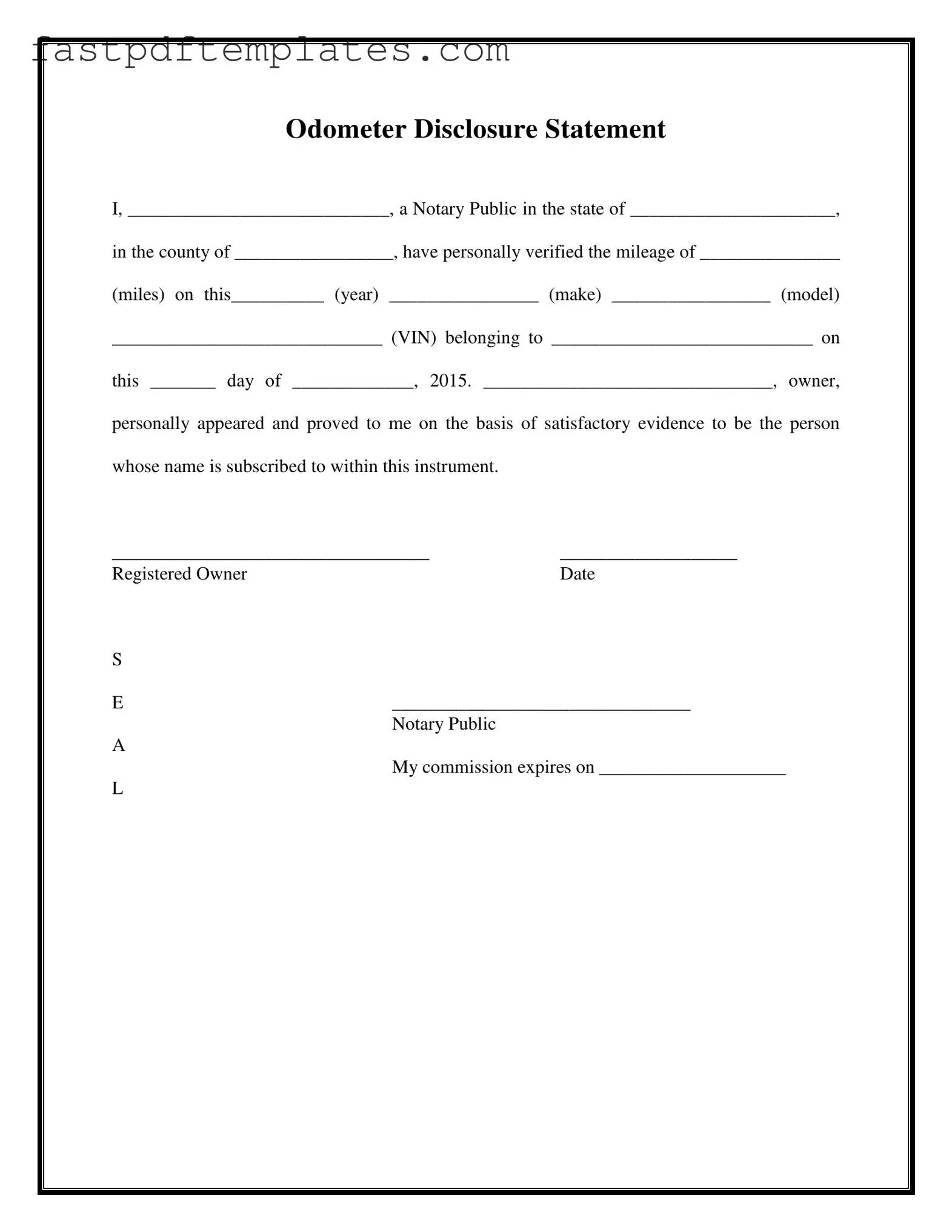Blank Notarized Odometer Statement Form
The Notarized Odometer Statement form is a crucial document used in vehicle transactions to confirm the mileage on a vehicle's odometer at the time of sale. This statement is completed by a notary public, who verifies the accuracy of the mileage and the identity of the vehicle owner. Ensuring that this form is properly filled out can help prevent fraud and protect both buyers and sellers in the automotive marketplace.
Access Document

